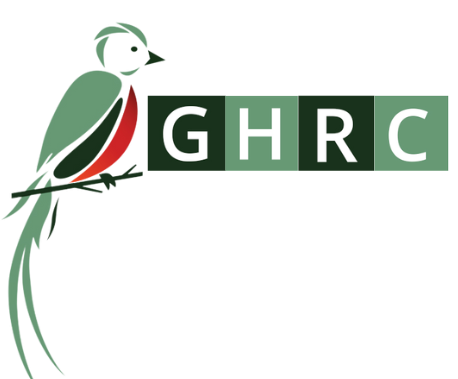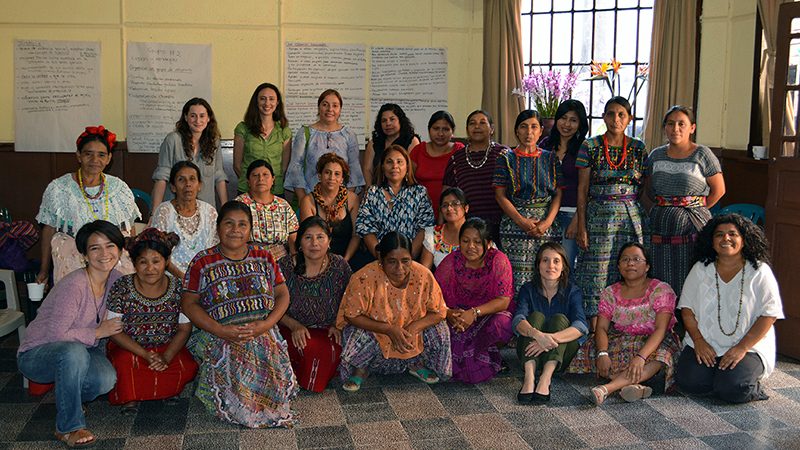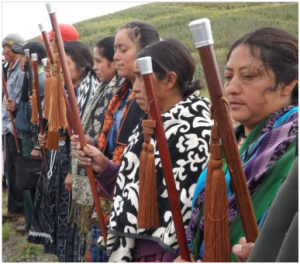On October 4, 2012, approximately 15,000 members of the indigenous communities in Totonicapán, Guatemala gathered to block five key transit points on the Pan-American Highway. Organized by the 48 Cantones of Totonicapán, the protests denounced the excessive electricity prices, changes to the professional teacher training requirements, and proposed constitutional reforms. Community leaders were also meeting with President Otto Pérez Molina in the capital to resume a dialogue.
The National Civilian Police and the military were sent to break up the protest and restore the flow of traffic. Although the Interior Minister ordered the military to remain back, a military contingent of 89 soldiers under the command of Colonel Juan Chiroy Sal confronted the protestors. Six protesters were killed and 40 were wounded by the military. Additionally, one of the protesters, Domingo Pablo Puac Vasquez, was disappeared during the confrontation. GHRC responded to the massacre in Totonicapán with a press release condemning the massacre and urging the government to thoroughly investigate, take steps to remove the military from security operations, and seek effective dialogue processes with indigenous communities.
Following the massacre, the administration responded with false explanations denying the responsibility of the military and claiming that the soldiers were not armed. When ballistics reports and photos showed that these claims were false, the administration retracted its position saying that the soldiers had fired into the air. After preliminary investigations showed that eights soldiers had fired at the crowd, the administration acknowledged that the soldiers had fired at protesters, although only in self-defense.
On October 10, 2012, President Pérez Molina declared that the administration would no longer deploy the military to break up public protests and carry out evictions. A few hours later, however, the President reversed his statement, presenting a new protocol for military collaboration with the police. Moreover, he announced compensation for the families of the victims who died during the protests and expressed his consideration of compensation for wounded protesters.
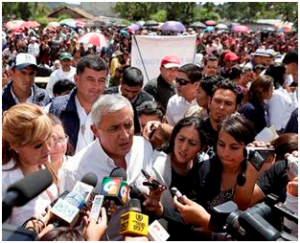
Photo: Siglo21
After completing an investigation of the massacre, the Public Prosecutor’s Office arrested Colonel Juan Chiroy and eight soldiers on October 11, 2012 under charges of extrajudicial execution. The case against the soldiers was opened on October 13, 2012. On October 23, 2012, the Inter-American Commission on Human Rights urged the government of Guatemala to conduct a comprehensive investigation of the deaths of the six protesters, and to prosecute and punish those responsible. Moreover, on October 25, 2012, the Criminal Court transferred the case to the First Judge of Group A of the High Risk Court in order to safeguard judicial independence.
The body of Domingo Pablo Puac Vasquez, who had been missing since October 4, 2012, was discovered in an advanced state of decomposition in a river on October 27, 2012. A preliminary autopsy reported that Puac Vasquez died of a hemorrhage and brain trauma. However, his family and Mario Itzep, director of the National Indigenous Observatory, claimed that the body displayed signs of torture.
On November 30, 2012, the defense attorney for the soldiers requested that the charge of extrajudicial execution be reduced to manslaughter, claiming that the soldiers had acted in self-defense. Attorney General Claudia Paz y Paz and the Assembly of the 48 Cantones rejected the claims of self-defense. Judge Carol Patricia Flores reduced the charges. The soldiers now stand accused of breach of duty and murder in a state of violent emotion; the Colonel is only accused of breach of duty.
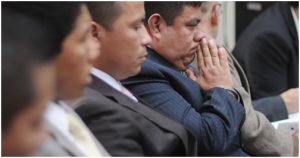
Photo: Plaza Publica
On February 22, 2013, GHRC met with the new Governing Board of the 48 Cantones of Totonicapán to share the work the organization had done in response to the killings perpetrated by state forces on October 4, 2012. Director Kelsey Alford-Jones presented a petition that had drawn over 10,000 signatures from all over the world. The signatories denounced the state violence directed against indigenous Guatemalans and called on the Attorney General, President Perez Molína, the Judiciary, and the Human Rights Ombudsman to shed light on the October 4th events.
GHRC has since awarded emergency funds to the families of three people injured in the massacre. The funds come from the Human Rights Defenders Fund, and are intended to assist with urgent expenses born by the victims of violations.
